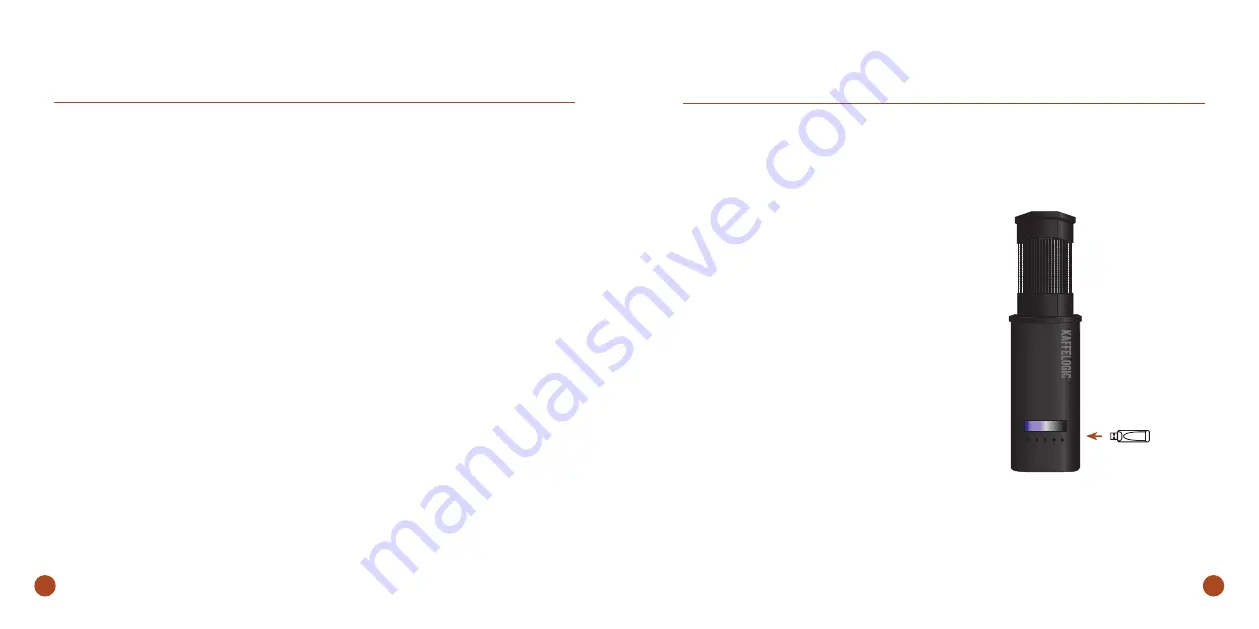
12
13
KAFFELOGIC - Nano 7.0
KAFFELOGIC - Nano 7.0
ROAST PROFILES
A roast profile is a curve that tells the
roaster the exact temperature required
at each time during the roast. The shape
of a roast profile curve is critical for
determining the development of flavour
during roasting.
Kaffelogic roast profiles do not specify
when to end the roast. The end of the
roast is controlled by the roast level: a
number from 0.1 to 5.9 that is set by the
user. A single profile curve can be used to
obtain a range of roast styles simply by
varying the level.
The roast levels are described in the
‘Levels’ section above. Normally you will
want to adjust the level for a particular
coffee origin until you achieve exactly the
results you are after. Trial and error is an
effective method. We recommend you
start at between 3.0 and 3.6 when aiming
for a medium roast.
Although the default profile is a Jack-
of-all-trades that will produce fantastic
coffee, you can further improve results
by choosing a profile that has been
developed specifically to suit the style of
beans or your desired style of roast.
For help selecting a profile see
Kaffeℓogic
Roaster’s Companion
available from
kaffelogic.com/support.
To load a new roast profile:
1. Plug the supplied memory stick into
your Kaffelogic Nano 7.
2. Click
Profiℓe
. Keep clicking
Profiℓe
until
the profile you want shows up on the
display.
3. Click
to load the profile. The profile will
load and the level will also change to the
recommended level for that profile.
4. You are now free to alter the level to
suit your tastes and to start roasting
with that profile.
5. The memory stick can be removed
from the roaster (but you will want to
keep it there if you are collecting log
files for your roasting).
Additional profiles can be downloaded
from kaffelogic.com/community. Download
the profile, open it with Kaffelogic Studio
(available from kaffelogic.com/support)
and click save to USB.
ROAST LOGS
A roast log will be saved if there is
a memory stick plugged into the
roaster during a roast. Roast logs are
automatically saved in the folder called
/kaffelogic/roast-logs/. Put the memory
stick in your computer to view the log.
Open the log file with
Kaffeℓogic Studio
(available from kaffelogic.com/support ).
Write the name of the beans and your
tasting notes
in the tasting notes section
under the
About this fiℓe
tab.
The roaster does not date the log
files; instead it gives them sequential
numbers. This makes it easy to keep the
files in order, but if you need to record
the actual roast date you must include it
in the tasting notes.
You can verify that logs are being
generated by running a test roast (see
the ‘Testing’ section above).
The roaster should create the folder
/kaffelogic/roast-logs/, however if
something goes wrong you can create
the folder yourself on your computer
and then verify that logs are being
generated (see ‘Testing’ above). Note that
the Nano 7 supports the FAT/FAT32 file
system only. The Nano 7 does not support
the exFAT file system.
A roast log will be saved if there is a memory
stick plugged into the roaster during a roast.
USB Stick
Содержание KN1007B
Страница 1: ...INSTRUCTIONS FOR USE Model KN1007B ...
Страница 11: ...kaffelogic com ...











